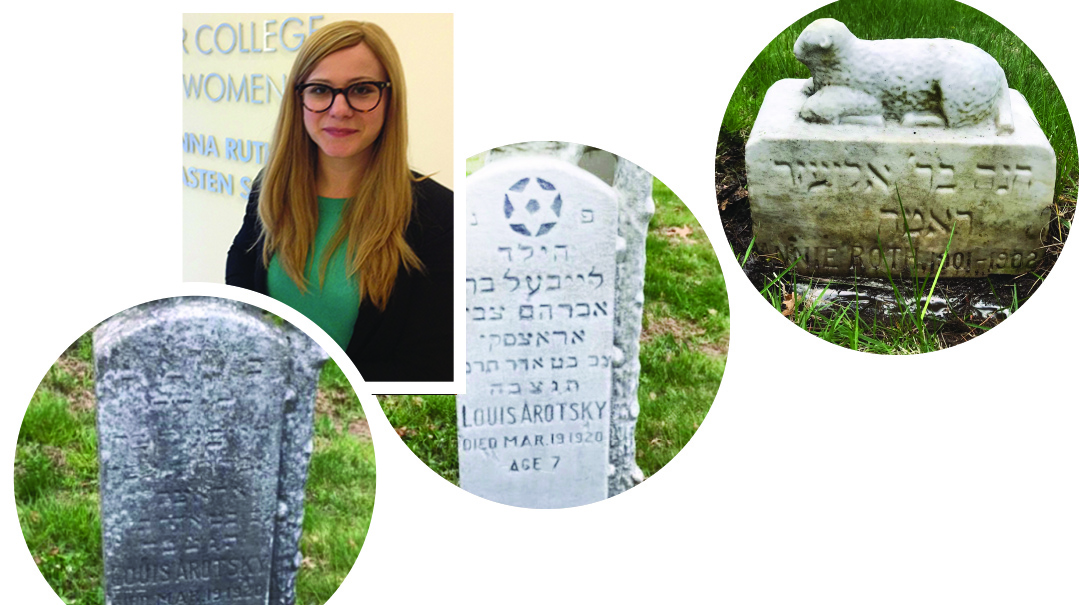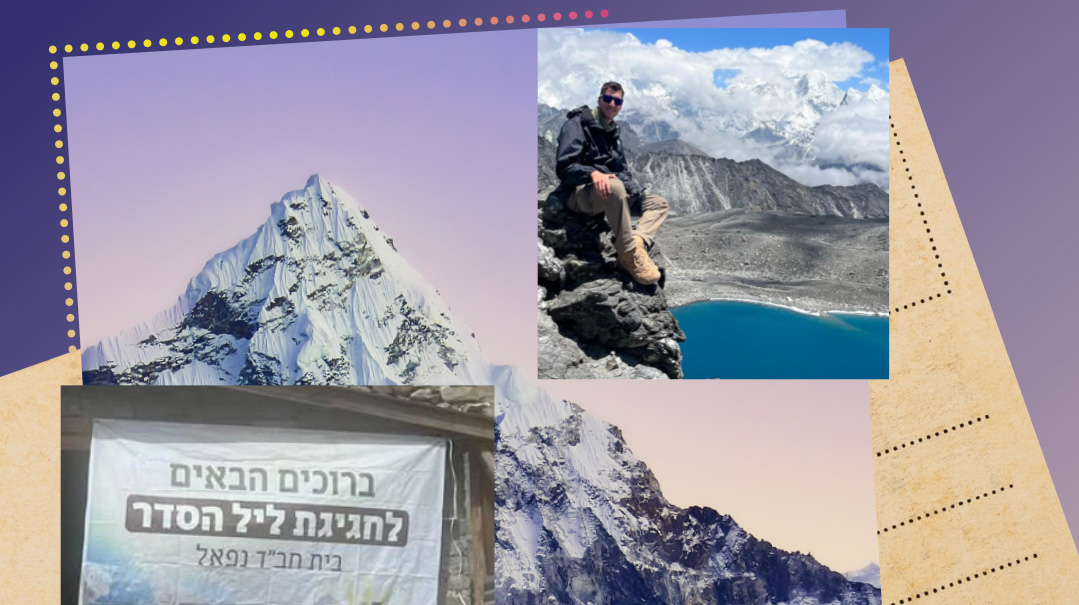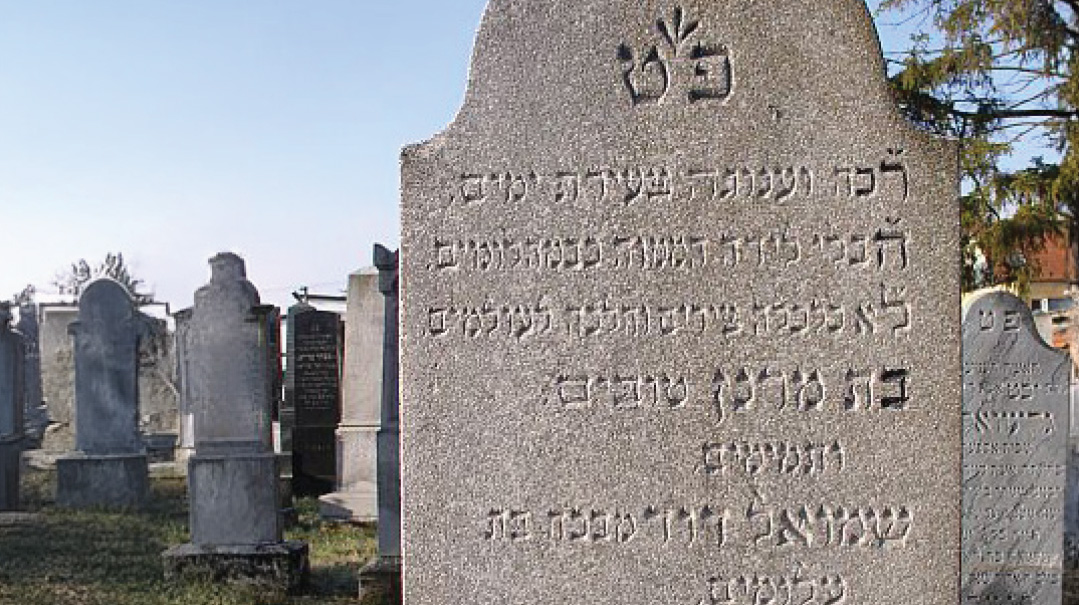On Your Mark with Hadassah Buchwald

Hadassah Buchwald is the co-founder of the Identity Preservation Project, based in New Haven, Connecticut

Rebirth in the Land of Ashes
I grew up in Poland, and no one would have been able to tell we were Jewish. The communist regime was oppressive for anyone, especially Jews, so within a year of the collapse of communism, my family moved to Israel. While the schools I attended in Israel from age 11 and on didn’t teach Torah from the traditional perspective, they served as my first introduction to our heritage.
At the end of my compulsory army service, I was recruited by the Ministry of Defense to return to Poland, where I worked in the Israeli embassy. In Poland, the land of Auschwitz and ashes, I began to visit the remaining vestiges of Jewish life. I was privileged to attend the Nożyk shul, the only surviving pre-war shul in Warsaw, which had escaped destruction because it was converted into a stable for the Wehrmacht.
Through these types of encounters with our history, I began to learn the tefillot, and soon became religious. Wanting to further my Jewish education, I came to the United States to study at Lander College, where I double-majored in psychology and Judaic studies.
I returned to Poland yet again, this time as a leader of the Ronald S. Lauder Foundation project to revive Jewish life in Eastern Europe. When people ask me what I did there, I turn the question around — what didn’t I do? Basically, brit milah and checking the eiruv. Everything else — early childhood through adult education, summer camps, the chevra kaddisha — were all part of the job description. Until today, I’m a member of the European Rebbetzins Association.
Lockdown
When COVID-19 exploded onto the world scene, I’d been settled in New Haven, CT for a while, while teaching in The Ramaz Middle School.
As the extent of the pandemic, and the curtailing of our usual activities, became clear, I began to think about how I could use all the enforced downtime to make a difference. Along with Dr. Michael Wiener, a tremendous under-the-radar baal chesed in the local community, I looked for a project — something that would be safe and responsible under the current medical guidelines that we wouldn’t normally have the opportunity to work on.
Because of my time in Poland, a land saturated with Jewish blood and history, I’d become sensitive to the obligation to remember the people who came before us, and the importance of carrying their legacy forward. Talking about my experiences, Dr. Wiener and I realized that for an American town, New Haven had a long and distinguished Jewish history, dating back nearly to the Civil War. Scattered throughout the city are batei chayim from a variety of different shuls, chevra kaddishas, and free loan societies. There’s even a Cemetery Road in East Haven, bordered by Jewish cemeteries.
So many of the headstones were toppled or unreadable; so many of these people had no one to care for their resting places. We decided to rehabilitate the matzeivos of these early Jewish pioneers.'
Grave Concerns
Dr. Wiener and I established some basic criteria. We looked for stones at least 100 years old, especially the graves of children, who didn’t even have any descendants to carry on their legacy.
There was quite a learning curve. Many of the stones were difficult to read, both due to decades of exposure to the elements, and also because many of the abbreviations and linguistic peculiarities aren’t currently in use, and were unfamiliar to us. To help us decipher the inscriptions, we turned to Rav Eliyahu Ben Haim of Great Neck, who helped us tremendously.
Once we’d determined what the stones were saying, it was time to clean and repair them. We’d clean the moss and accumulated dirt with a gentle cleanser and a little brush, like a shoe polish brush. Then we’d do any necessary repairs, and finally paint them with a special product that soaked into the stone, protected it, and improved the legibility of the engraving.
The work was ideal for COVID conditions, as it could be done outdoors, with plenty of social distancing. A few times, my daughters came along. As friends and neighbors heard of our work, they provided us with tips and leads: “There’s an overgrown grave down the road from me,” or “a neglected cemetery down that way.”
By now, we’ve restored dozens of matzeivos, and hope to continue as the weather improves.
Touching History
No matter how long I’ve been gone, I can’t leave Poland completely. I always think of all the souls we’ve lost, so many of whom will never have a Jewish burial. In a small way, this is my way of bringing back the lost memories of the previous generations.
These children, buried over a century ago, have no one visiting them, no one placing pebbles on the stone. Standing there, restoring their resting place, brings tears to your eyes. Even if you never knew the person — and we’ve never found any personal connection — they become part of the family.
At first it’s just a stone, and we stand there playing a guessing game trying to figure out what it says. We’ve developed different tricks — it’s like a fill-in-the-blank game. Sometimes, we use a mirror to help us get a better angle.
Then you crack the code, and it goes from just being a rock to being a history that belongs to someone. They become familiar; when we come to the cemetery, it’s like, “Oh look, there’s Leibele, there’s Seymour!” It’s heartbreaking to see how many graves there are of little children. Some were donated by others, which tells you a great deal about those years — so many early deaths, so much poverty and hardship.
As Dr. Wiener likes to say, this work epitomizes the Jewish value of dor l’dor. More than just telling stories about the way things used to be, visiting these sacred places, putting in the effort to maintain them instills in our children the memory of those who came before, and the obligation to keep their legacy alive.
Ripple Effect
I have a friend who isn’t very Jewishly educated, and always wanted to be cremated. After seeing the photos, and understanding the beauty of what we do and of the Jewish ideas about burial, he understands the importance, and agreed to be buried, eventually, according to halachah.
Reading Room
A very beautiful book a friend gave us is A Tribe of Stones, by Jewish-Polish photographer Monica Krajewska, which movingly chronicles Jewish cemeteries in Poland. It’s a reminder of all the neshamos we’ve lost and why we do what we do.
A Snowy Lamb
Annie Roth, age one year. Her matzeivah had a blackened lamb on top. Baruch Hashem, we turned it back into a pure white one.
(Originally featured in Family First, Issue 731)
Oops! We could not locate your form.







